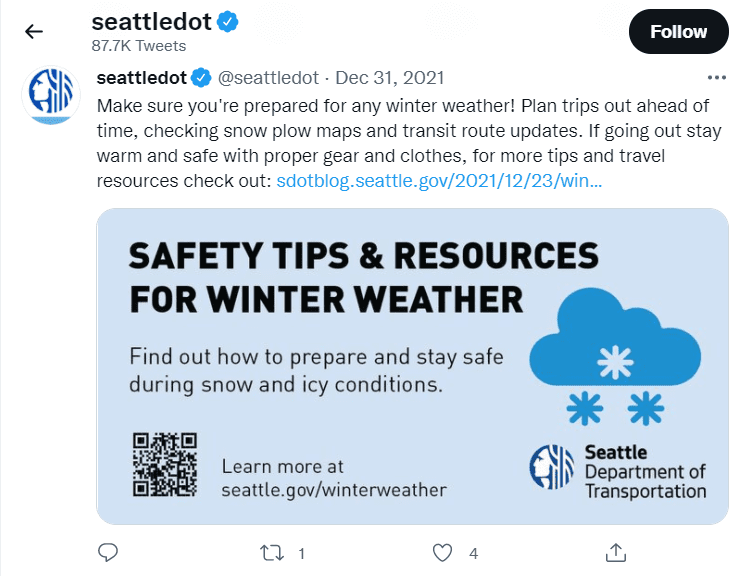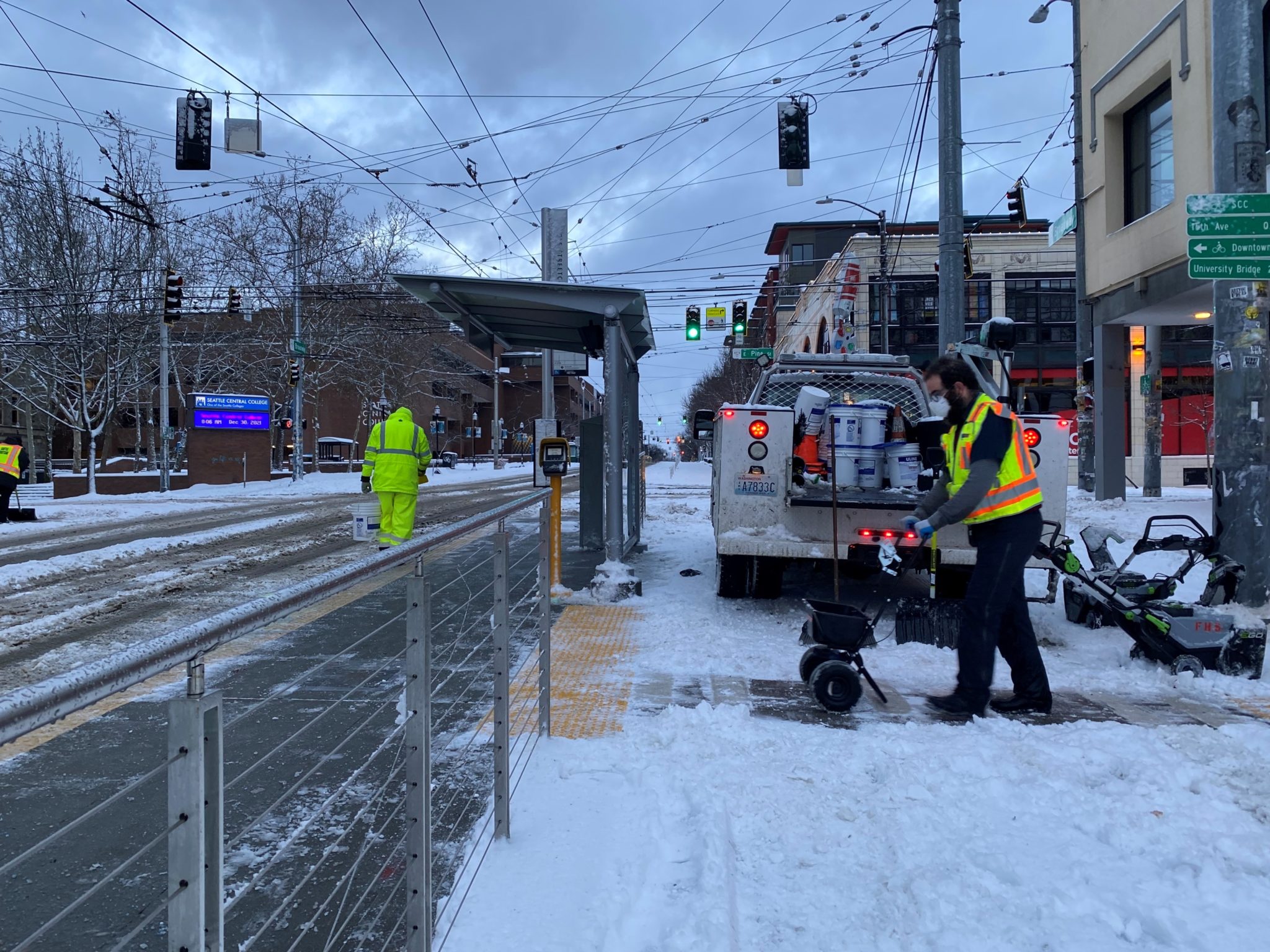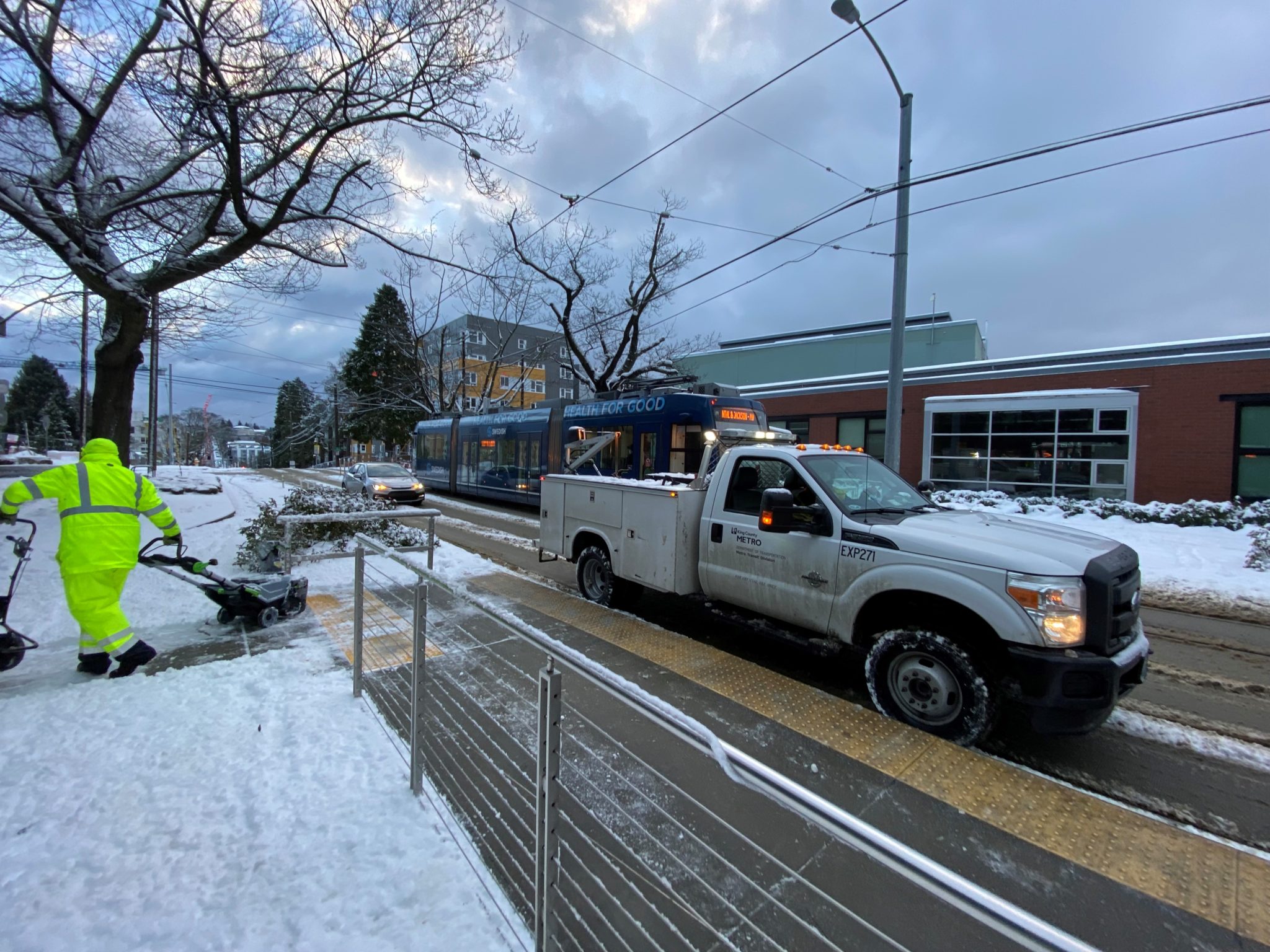 Our crews have been working throughout the day and night, including many 12-hour shifts, to help keep Seattle moving safely during the recent snow and ice storms. Photo credit: SDOT
Our crews have been working throughout the day and night, including many 12-hour shifts, to help keep Seattle moving safely during the recent snow and ice storms. Photo credit: SDOT Here at the Seattle Department of Transportation (SDOT), we prepare year-round for all types of challenging weather conditions – from the record-breaking heatwave last summer reaching 108 degrees to the recent winter snowstorms and sub-freezing temperatures, which dropped into the teens – the coldest overnight lows we’ve seen in Seattle since 2010.
Add unfortunate timing into the mix. The snow arrived over the Christmas holiday weekend, with additional snowfall and freezing temperatures ongoing until New Year’s (when many people take time off to be with family). Coupled with surging COVID-19 case numbers fueled by the Omicron variant, it truly was a “perfect storm” of challenging conditions.
Nonetheless, our team – particularly our frontline workers – met these challenges head-on. We mobilized our 24/7 emergency response operation, many of our crew members changed their holiday family plans to return to work, and we began pre-treating streets along snowplow routes before the first snow arrived. Once snow began to accumulate throughout Sunday, December 26, we continued plowing and de-icing these critical routes regularly – before, during, and after a snowfall – and later on as temperatures continued to fluctuate above and well below freezing level.
Our crew members completed many 12-hour shifts day and night, driving snowplows, clearing and de-icing downtown sidewalks and protected bike lanes, hand-shoveling curb ramps, and ensuring safe conditions at bus stops, public stairways, and pedestrian overpasses and bridges. We also appreciate the crucial support we received from other City of Seattle departments. Seattle City Light, Seattle Public Utilities, and Seattle Parks & Recreation workers helped our efforts in the field, and the Finance and Administrative Services team helped keep our vehicles and equipment running smoothly, as part of our One Seattle response!
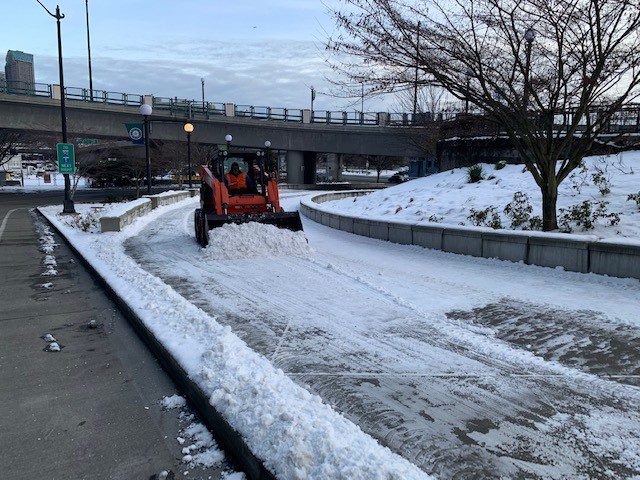
Back in early December, we conducted a snowplow training exercise to test equipment and ensure that our snowplow drivers were familiar with their routes. This preparation helped our crews be ready to go when the real snow arrived later in the month.
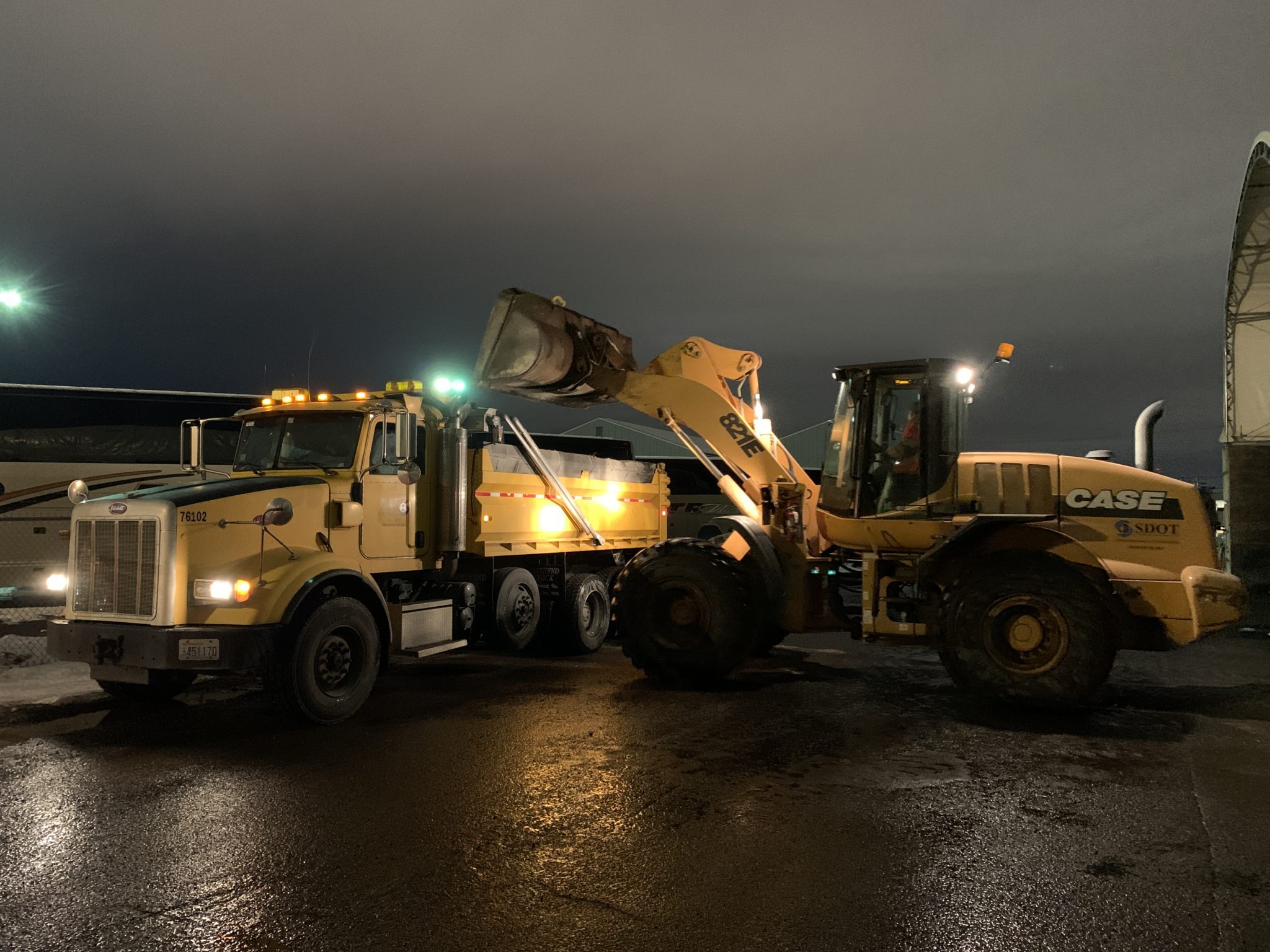
We recognize that it’s been challenging for folks to get around during the winter storm
- We understand that prolonged snow and ice on streets and sidewalks make for challenging travel conditions for Seattle residents, workers, medical patients, and other community members trying to get where they need to go in a safe and timely fashion. Particularly those with specific mobility needs.
- Safety is one of our core values at SDOT and a top priority, and we work non-stop to keep travel routes safe and clear for people who need to make essential trips.
- We acknowledge there are areas in the city, including residential streets and many sidewalks, where our crews do not currently support clearing. Our snowplow routes were selected to help ensure transit, and emergency responders reach essential destinations across the city. Destinations include schools and public health sites such as vaccine clinics, warming shelters, dialysis centers, and locations requested by the Seattle Police and Fire departments.
- We focus available staff, equipment, and other resources on maintaining these critical travel routes. Nonetheless, we understand and appreciate the feedback and frustrations shared by some community members regarding recent travel challenges in areas located beyond our snow and ice response plan.
- This includes requests to clear more sidewalks around schools, COVID-19 testing sites, and other locations to support people walking, rolling, and biking during winter weather. We will continue to consider ways to prioritize and improve multimodal access in the future as we review the past two weeks and update our snow and ice response plan.
- Along with the snowplow routes, our crews worked non-stop to help improve access for people walking, rolling, and biking by shoveling sidewalks that aren’t near privately-owned buildings, as well as outdoor stairways, pedestrian overpasses, sidewalk curb ramps, and protected bike lanes across the city.
- We sincerely appreciate the many Seattleites who pitched in to help with this effort by shoveling and de-icing the sidewalk near their homes and businesses. Doing so isn’t just the law; it’s the right thing to do so everyone can travel safely, particularly people who are blind, disabled or have a harder time getting around. We created this video in partnership with Rooted in Rights that explains how this supports accessibility for all. Thank you again for your time and efforts.
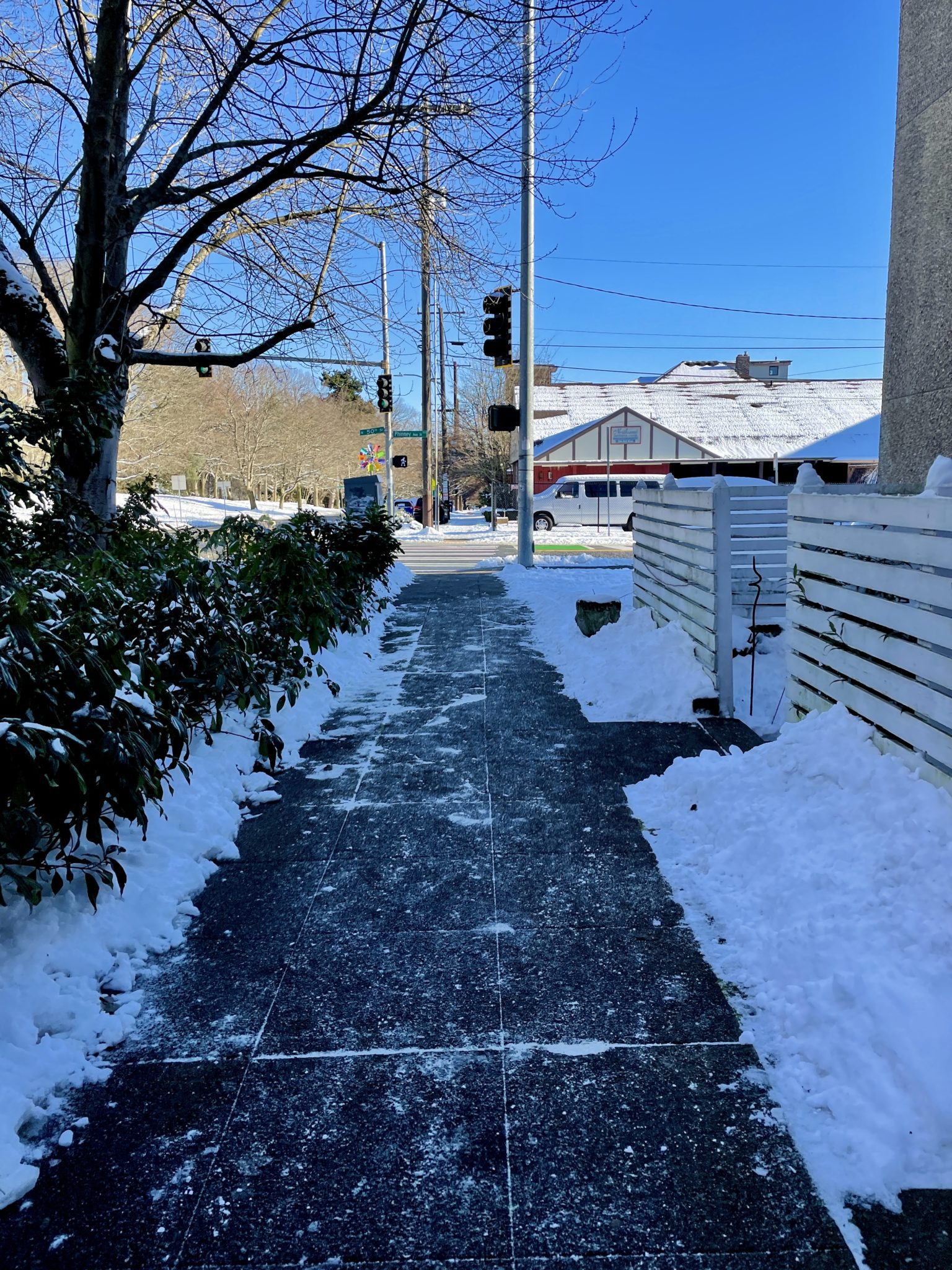
Keeping the public informed
Throughout the storm and response, we shared regular updates with the public, the media, and our subscribers through various communications channels. Our goal was to ensure community members had the tools and resources they needed to stay safe and informed. This included:
- Web Resources:
- Our Winter Weather Response web page is online year-round and has information on how we respond to winter storms and prepare the public. This web page is available in 14 languages to provide easier access to this information for community members who speak these languages.
- The web page includes links to our snowplow route map, traffic camera map, storm response map (updated regularly), winter weather postcard, and the Citywide winter storm response website, which covers topics such as food bank and warming shelter locations, power and utilities information, home and pet safety guidance, and more.
- SDOT Blog and Media Updates:
- We published three SDOT Blog posts to highlight how the public could prepare in advance, and how to get around safely and learn about our storm response once the snow and ice arrived. We also provided information to local media outlets throughout our storm response. Our prior Blog posts can be found here: Blog post #1 and Blog post #2.
- Social Media:
- We’ve provided regular updates and replied to questions via our official SDOT social media channels, which include Twitter (@seattleDOT and @SDOTtraffic), Facebook, Instagram, LinkedIn, YouTube, and Flickr.
- We’ve also shared and re-Tweeted important updates from our regional partners, such as WSDOT, Sound Transit, and King County Metro, which operated buses on its Emergency Snow Network until Sunday, January 2.
- Mailing and Community Partnerships:
- Over the past several months, we’ve also connected with 35 community groups to provide information in 14 languages and distributed approximately 20,000 printed brochures to help community members prepare for winter weather and storm events.
- 24/7 Emergency Operations Center and Joint Information Center:
- Our team staffed these centers around-the-clock to ensure we were closely coordinated and sharing frequent updates across City departments, with our crew members in the field, to senior leadership, and with the media and the public.
